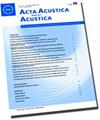西班牙西南部沿海地区城郊自然公园人为噪声制图——以鸟类生态系统保护为例
Q1 Arts and Humanities
引用次数: 0
摘要
本文提出了一种方法方法,试图回应一些保护和管理的需要,反对城市周边自然公园的噪音。提出的方法是基于“特设”噪声图的生成。为了分析其使用的可能性和局限性,本文以西班牙西南部一个被人口稠密地区包围的沿海公园为例进行了研究。在本研究中,不同生态系统中的鸟类是研究的主要目标噪声接收器。考虑的噪声污染源是高速公路和公园周边城市化地区的交通噪声。然而,该方法可以外推到任何噪声源和其他保护数字。对环境噪音的充分诊断将有助于克服自然保护与自然空间的旅游开发之间的所谓不相容。考虑到这一点,它也被提议作为目标噪音接收器,鸟类学家和希望成为观鸟者和观鸟者的游客。为此目的,有人建议根据具体情况制作带有某些方法指导方针的噪声图。本文使用了几个高度,使地图适应于噪声接收器。出于同样的目的,在八度频带中开发了噪声级图。感兴趣的音调频率是鸟类在唱歌时使用的频率(根据物种,通常在2到8千赫之间)。这些地图与整个公园的噪音测量结果进行了对比。研究表明,在里约圣佩德罗和大学校园的噪音最严重的地区,在交通高峰时段,2 kHz的噪音水平可以达到74 dB。此外,这两个地区的很大一部分面积受到超过50分贝的噪音水平的影响(分别为100%和44%)。我们还关注的是,根据在交通高峰期的初步观察,在这些地区发现了少量的鸟类。研究结果可以帮助决策者评估交通噪音是如何入侵不同的生态系统的,以及它在哪里可以掩盖鸟类的声音。本文章由计算机程序翻译,如有差异,请以英文原文为准。
Anthropogenic Noise Mapping of a Periurban Natural Park on the Coastal Area in the SW of Spain: Case Study of Bird's Ecosystem Protection
This article presents a methodological approach to try to respond to some of the protection and management needs against the noise of a peri-urban natural park. The methodology presented is based on the generation of "ad hoc" noise maps. To analyze its possibilities and the limits of
use, a coastal park surrounded by a densely populated area in the southwest of Spain is used as a case study. In this study, birds in their diverse ecosystems are the main target noise receiver of the study. The source of noise pollution considered is the traffic noise of the highways and
the urbanized areas surrounding the park. However, the methodology can be extrapolated to any source of noise and other protection figures. An adequate diagnosis of the environmental noise would help to overcome the supposed incompatibility between the preservation of nature and the tourist
exploitation of natural spaces. With this in mind, it has also been proposed as target noise receivers, the ornithologists and visitors who wish to become bird-watchers and bird-listeners. To this end, it has been proposed to produce noise maps with certain methodological guidelines that fit
on a case-by-case basis. Several heights are used in this paper, adapting the map to noise receivers. With the same purpose, noise level maps in octave bands were developed. The tonal frequencies of interest are those that the birds use in their songs (according to the species, normally between
2 and 8 kHz). The maps have been contrasted with noise measurements carried out throughout the park. The study shows that in the areas most exposed to the noise of the Rio San Pedro and the university campus, noise levels at 2 kHz can reach 74 dB during the peak traffic hours. In addition,
a large percentage of the area of both areas is affected by noise levels that exceed 50 dB (100% and 44% respectively). We are also concerned that a small population of birds has been counted in these areas based on preliminary observations at peak traffic times. The results can help the decision-makers
to evaluate how traffic noise invades different ecosystems and where it can mask the sound of birds.
求助全文
通过发布文献求助,成功后即可免费获取论文全文。
去求助
来源期刊
CiteScore
2.60
自引率
0.00%
发文量
0
审稿时长
6.8 months
期刊介绍:
Cessation. Acta Acustica united with Acustica (Acta Acust united Ac), was published together with the European Acoustics Association (EAA). It was an international, peer-reviewed journal on acoustics. It published original articles on all subjects in the field of acoustics, such as
• General Linear Acoustics, • Nonlinear Acoustics, Macrosonics, • Aeroacoustics, • Atmospheric Sound, • Underwater Sound, • Ultrasonics, • Physical Acoustics, • Structural Acoustics, • Noise Control, • Active Control, • Environmental Noise, • Building Acoustics, • Room Acoustics, • Acoustic Materials and Metamaterials, • Audio Signal Processing and Transducers, • Computational and Numerical Acoustics, • Hearing, Audiology and Psychoacoustics, • Speech,
• Musical Acoustics, • Virtual Acoustics, • Auditory Quality of Systems, • Animal Bioacoustics, • History of Acoustics.

 求助内容:
求助内容: 应助结果提醒方式:
应助结果提醒方式:


